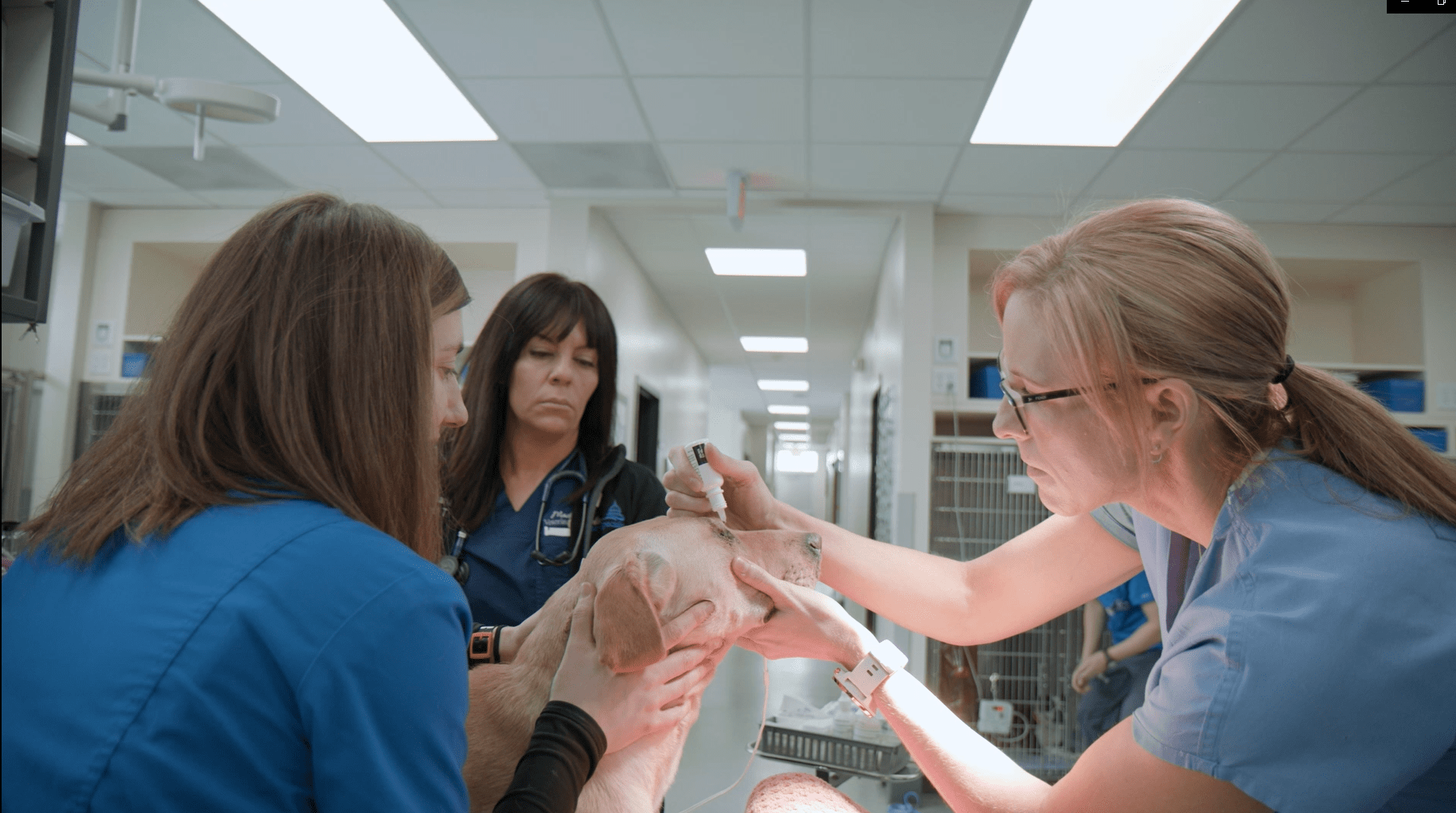Living with Blind Pets
Taken from www.blindtails.com . Visit their website for additional information and resources on pets with vision loss.
When a pet first loses vision, there is an inevitable period of adjustment for the pet and their family members. Each animal is different and while some may need weeks to become comfortable navigating again, others, especially those who have been going blind slowly, will proceed with very little hesitation. The loss of vision is often harder on the human family members as people cannot help but imagine themselves in a suddenly dark world without vision. While this is a common tendency, these fears are most often put to rest quickly as families watch their pet re-learn to do almost everything they could previously do.
The following list includes helpful tips to help your pet make the adjustment
- The Mental Map. Your dog or cat will have created mental roadmap of your home environment prior to the onset of blindness and then using a myriad of other clues after vision loss. Hearing and smell provide obvious clues, but your pet will also rely on other clues including texture difference, temperature gradients across a room, and directional wind currents. In an ideal world, furniture could remain in the same place forever, but if a couch needs to be moved, your pet might bump a few times and then she will revise the mental map. In new settings or if changes occur at home, consider leading your dog around with a leash at first to him explore the territory.
- Provide verbal clues. Since there are times when you and your pet will venture outside of the home, continuously talk to him so that he can follow your voice. Start teaching verbal cues such as “step up” and “stop”. Dogs and cats have shown evidence of vocabularies that exceed 100 words, so talk freely and often and your pet will listen.
- Leave food, water, and bedding in the same place. Since the bustling modern households can feel chaotic, try to create a safe home base for your pet by leaving the food, water, and bed in the same space. If you find that your pet can find the food and bed by tracking scent and sound but is not drinking enough, consider a bubbler in the water dish to provide an audible clue. Consider adding a splash of chicken broth to a fresh water dish to entice.
- Safety Gates. Even the most well-adjusted blind dog will occasionally make a mistake in the mental map, so consider gating the steep stairwells and always cover pools and limit access to open water.
- Toys with sound and high contrast. If your pet loved to play with toys before he lost vision, he will still want to play once blind but will need other clues to help him find a favorite ball. Consider toys with bells or music. If a dog has not lost vision completely, toys that provide a bright visual contrast against their background can provide hours of entertainment. The classic yellow tennis ball works well against grass or dirt but will be difficult to track against light carpeting.
- Behavior specialists and pet trainers. Board-Certified veterinary specialists and their teams can work with you to develop specifically tailored plans to help your pet adjust if you feel that he or she is having a more difficult time coping with the loss of vision. In addition, many knowledgeable dog trainers can work with you and your pet to ease a slower adjustment.
- A “Seeing Eye” companion. If you have another pet in the household, consider the role she could play in as a guide. Try attaching a bell or additional identification tags to the collar of the visual pet for extra jingle. This will provide clues for navigation but also give your blind pet advanced warning if a playful puppy or competitive feline is heading in their direction.
- Enable the ability, not the disability. If your dogs loved going for hikes or running in the yard before he lost vision, encourage those activities to continue. Blind pets can tear up and down stairs, leap on and off beds, and even chase down chipmunks. As long as you have ensured a safe environment, let them stretch their legs while you sit back and smile. At first, your dog may wait at the stairs and bark for you to carry them up and down. Try to resist this human training lesson or they will successful train you to provide the ride each and every time!
- Spread the Word. Warn visitors, especially fast-moving children, that your pet does not have vision. Even the most gentle pet (or human, for that matter) can be startled and possibly snap with surprise if someone grabs them suddenly without warning. When offered a calm voice and a steady approach, your pet will have ample cues and can happily greet a visitor.
- Bright and healthy eyes. Even when vision is lost, it is important to monitor your pets’ eyes for signs of distress including squinting, redness, clouding and discharge. Blind eyes can be at risk for corneal scratches (ulcers), inflammation inside the eye (uveitis), and high pressures (glaucoma). Your family vet and local veterinary ophthalmologist can help maintain the health and comfort of your pets’ eyes.





